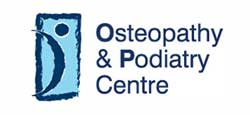In essence, each professional has the same goal and that is to identify the source of pain and aim to alleviate the symptoms. All three are trained in orthopaedic and neurological testing to help diagnose their patient’s presenting complaint.
They differ in the techniques they employ to treat and manage the patient.In Osteopathy and Chiropractic the emphasis is a more “hands on” approach.
To help answer this question without bias, we refer to the regulatory bodies of each profession.
Osteopathy:
Osteopathy is a system of diagnosis and treatment for a wide range of medical conditions. It works with the structure and function of the body, and is based on the principle that the well-being of an individual depends on the skeleton, muscles, ligaments and connective tissues functioning smoothly together.
Osteopaths use manual techniques such as physical manipulation, stretching and massage to increase the mobility of joints, to relieve muscle tension, to enhance the blood and nerve supply to tissues, and to help your body’s own healing mechanisms. They may also provide advice on posture and exercise to aid recovery, promote health and prevent symptoms recurring. The key benefit of Osteopathy is the holistic approach to the patients presenting complaint.
Chiropractic:
Chiropractic is a health profession concerned with the diagnosis, treatment and prevention of mechanical disorders of the musculoskeletal system (bones, joints and muscles), and the effects of these disorders on the function of the nervous system and general health. There is an emphasis on manual treatments including spinal adjustment and other joint and soft-tissue manipulation.
Physiotherapy:
Physiotherapists help people affected by injury, illness or disability through movement and exercise, manual therapy, education and advice. Physiotherapists tend to use modalities such as ultrasound, interferential machines and taping techniques, to name but a few. Physiotherapists require post graduate training in order to perform spinal manipulative techniques.
The old term for podiatrists in the UK was chiropodist but as the profession has grown and developed it has moved away from this name. Up until recently anyone could call themselves a chiropodist or podiatrist without having any recognised degree qualifications. It was common for people to complete correspondence or eight week residential courses and start up private practices calling themselves Chiropodists or even Podiatrists. Nowadays the profession is regulated by new regulatory body is called the Health and Care Professions Council (HCPC) and those not completing degree qualifications can only call themselves 'Foot Health Practitioners', however those that completed their training earlier and had been working in private practice for a minimum of three years and met a minimum set of requirements could become registered with the HPC through a process know as grandparenting. Podiatrists or chiropodists who have not completed a degree course however are not able to work for the National Health Service in the UK.
Our instruments are manually scrubbed and then ultrasonically cleaned in a special anti-rust/antiseptic solution before being individually wrapped and sterilized in a sterilizer that meets international standards.
Please aim to arrive 10-15 minutes before your scheduled appointment time to allow time to find the clinic and for registtration
On your first visit, and before the examination begins, the osteopath will discuss and record you medical history in detail. You may then be asked to remove some of your clothing so that a series of observations and biomechanical assessments can be made. Female patients will be given a gown to wear.
The osteopath will then apply a highly developed sense of touch to identify points of weakness or excessive strain throughout the body. Further investigations may include an X-ray or blood test. This will allow a full diagnosis of the problem and will enable the osteopath to tailor a treatment plan to your needs, estimating the likely number of sessions needed to treat your condition effectively. If the osteopath thinks that your condition is unlikely to respond to osteopathic treatment, you will be advised about how to seek further care. Our osteopaths are skilled in diagnostic techniques and trained to identify when a patient needs to be referred to a GP or specialist.
Our osteopaths will make you feel at ease and tell you what is happening throughout your consultation. You should ask questions if you have any concerns.
Please aim to arrive 10-15 minutes before your appointment time to allow time to find the clinic and to register.
For every patient a medical history will be taken including a family history. Please bring a list of all current medication.
Clinical treatment for corns, callus and nails is usually painless and takes 30-45 minutes. It is wise to bring along some examples of regular footwear so the podiatrist can assess the cause of the problem as well as treating the presenting symptoms.
Biomechanical assessment for sports injuries, children’s walking assessments, bunions, flat feet, etc. requires a 45 minute appointment. Preferably come dressed in shorts or loose trousers that can be rolled up to expose the knees during the gait assessment. The podiatrist will assess the feet during standing and walking as well as assessing the joints and muscles when the patient is lying prone. Examples of regular footwear for sport and daily wear are again useful to the podiatrist.
We aim to be transparent with our fees - all fees include treatment. Added costs are only for purchases such as dressings, foam rollers, orthotic slippers, insurance reports etc.
Payment can be made by various means: Cash, Cheque, Credit Card (Visa/Mastercard/American Express) and Nets.
Osteopathy
| All Osteopathy Appointments | $160 |
Podiatry
| First Appointment Clinical | $135 |
| First Appointment Biochemical | $160 |
| Follow-Up Appointments | $125 |
| 3D Scanning for Orthotics | $80 |
| Orthotics | $500-$600 (depending upon the prescription) |

